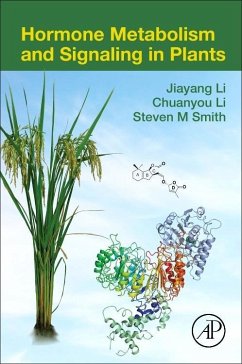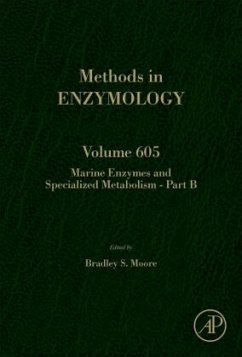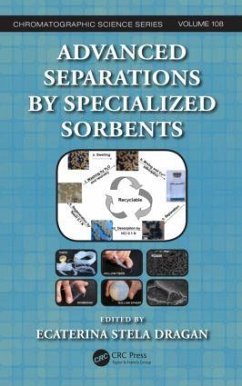
Gebundenes Buch
Plant Specialized Metabolism
Genomics, Biochemistry, and Biological Functions
Herausgeber: Arimura, Gen-Ichiro; Maffei, Massimo
Versandkostenfrei!
Versandfertig in über 4 Wochen

PAYBACK Punkte
118 °P sammeln!




Around 200,000 specialized metabolites are formed by a wide array of plant metabolic pathways from numerous plant taxa and through learning how other species (including human beings) rely on them. Plant Specialized Metabolism: Genomics, Biochemistry, and Biological Functions will provide the reader with special insights into the sophisticated nature of these metabolites and their various and valuable uses based on the most recent findings in science.
Gen-ichiro Arimura, PhD, received a PhD in science from Hiroshima University (Japan). He began his career in 1998 at Kyoto University, working in the field of molecular ecology of plant communications mediated by herbivore-induced plant volatiles. Sponsored by a fellowship from the Japan Society for the Promotion of Science (JSPS), he spent 2 years (2002-2004) at the University of British Columbia, Vancouver, Canada, working on terpene biosynthesis. Beginning in 2004, Dr. Arimura pursued his interest in the biosynthesis and regulation of plant terpene biosynthesis at Max Planck Institute for Chemical Ecology, Jena, Germany. He has worked mainly on molecular and chemical ecology of plant and arthropod mutualisms since joining the faculties at Kyoto University (2008-2013) and Tokyo University of Science (from 2013 to present). Dr. Arimura is one of the editorial board members of Scientific Reports and Applied Entomology and Zoology. Massimo E. Maffei, PhD, received a PhD in plant biology from the University of Turin (Italy) in 1981. In 1984, he became a research associate for the Istituto di Botanica Speciale Veterinaria (University of Turin); from 1989 to 1992 he was an assistant professor; from 1992 to September 2000 he was an associate professor of plant morphology and physiology; and since October 2000, he has been a professor of plant physiology in the Department of Life Sciences and Systems Biology of the University of Turin. He is the coordinator of the PhD School in Pharmaceutical and Biomolecular Sciences. He was also the director of the Department of Plant Biology and vice dean of Faculty of Sciences from 2000 to 2006. From October 2003 to December 2006, Dr. Maffei was the coordinator of the Centre of Excellence for Plant and Microbial Biosensing (CEBIOVEM). From July 2012 to February 2014, he was vice director for research in the Department of Life Sciences and Systems Biology. From 1987 to 1988, he was a postdoctoral research associate at the Institute of Biological Chemistry at the Washington State University under the guidance of Professor Rodney Croteau. From 1990 to 1993, he was a visiting professor for the Mediterranean Agronomic Institute of Chania, Greece (MAICH-CHIEAM), teaching secondary metabolism of Mediterranean medicinal and aromatic plants. Dr. Maffei is a member of the Academy of Agriculture and of the Academy of Sciences of the University of Turin. He is also a member of a number of international and national scientific associations; a member of the editorial board of the international publication, the Journal of Essential Oil Research; and is a reviewer for several other journals. He is the editor in chief of the Open Access JCR Journal of Plant Interactions (published by Taylor & Francis). Dr. Maffei's research is dedicated to the study of secondary plant metabolites, with a particular reference to terpenoids, wax constituents, and phenolic compounds, as well as primary/secondary metabolic interactions. Recently, electrophysiological, transmission electron microscopical, and laser confocal scanning microscopical methods have been used to detect the involvement of cytological, membrane-related, and nuclear factors in the transduction of signals arising from plant-plant, plant-herbivore, and plant-pathogen interactions.
Produktdetails
- Verlag: Taylor & Francis Inc
- Seitenzahl: 376
- Erscheinungstermin: 21. Oktober 2016
- Englisch
- Abmessung: 234mm x 163mm x 25mm
- Gewicht: 698g
- ISBN-13: 9781498726283
- ISBN-10: 1498726283
- Artikelnr.: 46764653
Herstellerkennzeichnung
Libri GmbH
Europaallee 1
36244 Bad Hersfeld
gpsr@libri.de
Für dieses Produkt wurde noch keine Bewertung abgegeben. Wir würden uns sehr freuen, wenn du die erste Bewertung schreibst!
Eine Bewertung schreiben
Eine Bewertung schreiben
Andere Kunden interessierten sich für











